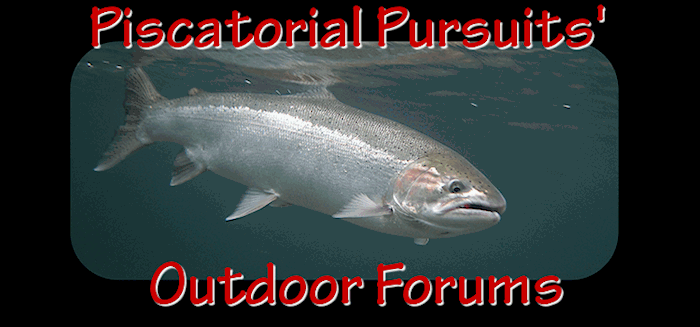Below was the review based on my first field tests, however on the second field trial I upped the products grade to at least a "B". Follow along with the thread to see what day #2 brought.--VHawk
It's no wonder that people rarely switch fishing lines, 'ya almost never know what to expect.
Jess, Irie, and I spent the day fishing floats and jigs for steelhead, using samples of P Line Hydrofloat mailed to me by the company. We were using the '20 pound' test as mainline, with '10 pound' test CXX for leader material. I can tell you that was my mistake right there. CXX in the 10 pound test has about a 3 pound advantage in strength over the 20 pound test Hydrofloat. Does that make any sense to you? Well it's because the entire fishing line industry is screwy. Sometimes what's marked on the box is dead accurate, and sometimes...
What's marked on the Hydrofloat box IS accurate, it does break just under 20 pounds. What's marked on the CXX is not accurate. The stuff is incredibly strong; 10 pound test breaks at 22 pounds. If I had done the home lab tests on the Hydrofloat first, I'd known to pair it up with 6 or 8 pound CXX. Lets just say I lost a few floats today.
Performance:
The stuff floats like a cork. Is easy to see, which makes it easy for me to direct the anglers up front to mend, pick up slack, etc. It has enough stiffness that it doesn't wrap the rod tip like some braids I've used for floats. Casting performance is just ok. It doesn't come off a spinning reel as easy as more limp braided spectra lines. That is the trade off that comes with decreasing the tip wrapping.
Downsides are; The coating seems to flake off easier than I'd expect. Just spooling up the reels yesterday I came away with a yellow dandruff all over the floor, running the bobber stop up and down the line ate the coating away pretty quickly, although the line continued to float. With the box being marked as 20 pound test, I expected the line to perform like the average 20 pound mono as far as strength; Which is to say I expected the stuff to break at about 27-30 pounds, it broke at just under 20. It gave the impression of being an easily frayed line, because of my own assumptions/expectations. We did seem to need to cut and retie more often than I remember having to do with other gel spun lines. Cutting and retying mainline when bobber fishing is a bigger pain in the ass than with drift fishing.
Recommendation:
For marketing I'd recommend that P Line market the 20 pound line as '14 pound test'. With that most anglers would have an accurate expectation of how the line would perform.
For guys who are interested in fishing this line I'd recommend using a single bobber stop ( I like to normally use two nail knots, and it dug into the hydrofloat). Don't spool this on anything less than a size 3000 spinning reel, it's thicker than traditional braided line. A 2500 or 2000 sized spool doesn't give enough capacity. Use a leader material that will break under 20 pounds. Almost any 10 pound leader material will meet those expectations with the exception of CXX.
My thanks to Don Newman who was kind enough to send me a massive box of different P Line products. I hope he understands I value my credibility, and independence with regard to product reviews. As such, I can't say I was dazzled by this line. It has to compete with the incredible performance of lines like P Line Evolution (my new favorite line for drift fishing), and CXX.
I will give the 30 pound samples a trial later this year for springers, with adjustments. And I also have a spool of 20 pound Hydrofloat line if someone is interested in giving it a field test as well. Free to the first person to come and pick it up.
For those who are hardcore float fishers, for $14 it might be worth a trial to see if it'll fit into your arsenal.
Preliminary Grade C+
VHawk
let me know if this was helpful.













 Previous Topic
Previous Topic Index
Index


